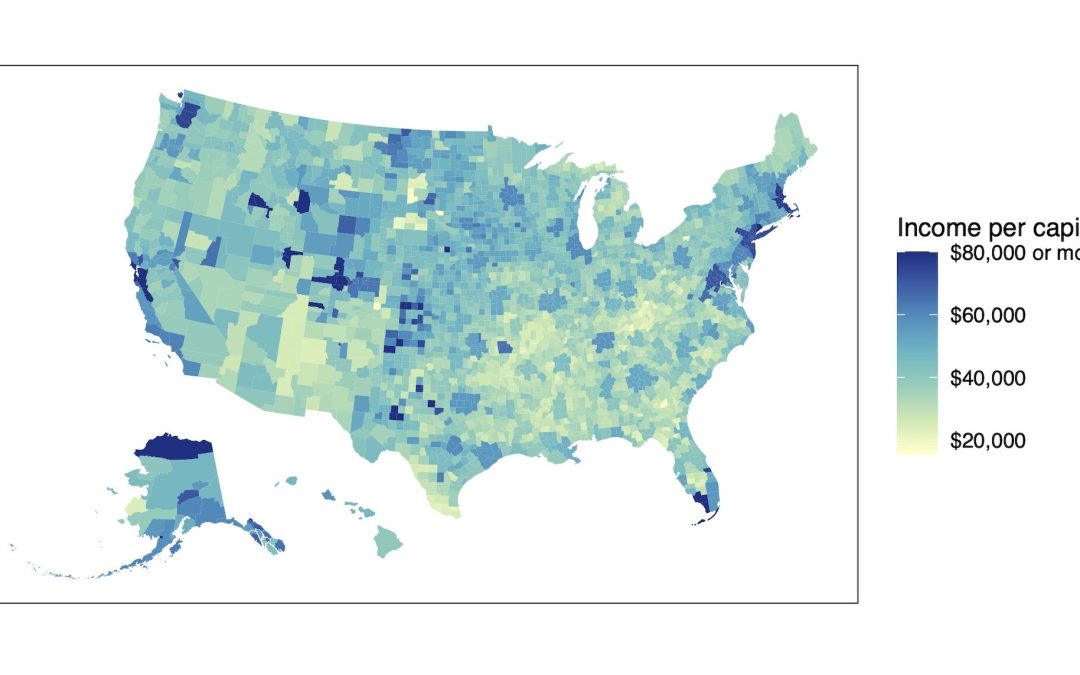By: Jon Meerdink
Upward mobility is a key measure of both objective and subjective economic success. Researchers use indicators of upward mobility to compare the economic success of one generation to the next, and in countries around the world, parents often express the desire to see their children achieve greater success than they did.
But according to Robert Manduca, a faculty associate at the Stone Center for Inequality Dynamics, absolute income mobility — the measure of one generation’s inflation-adjusted earnings against their parents — has been declining in the US for about half a century, and may be declining in other countries as well.
In “Measuring Absolute Income Mobility: Lessons from North America and Europe” published in the American Economic Journal: Applied Economics, Manduca and other researchers examine trends in absolute income mobility around the world, finding that many countries are seeing similar patterns of declining upward mobility. Using income at age 30 as a baseline, Manduca and his collaborators found that fewer members of newer generations in several countries grow up to earn more than their parents. Declines are not the same everywhere, but it does seem to be a trend.
“We see these same declines in a couple of other countries. In Canada and in Finland, for instance, only about 55% of 30-year-olds earn more than their parents did at the same age, compared to 50% in the United States,” said Manduca. “But in some other countries we see much less of a decline and more of a steady pattern, for example in the Netherlands, Norway, and to some extent in the United Kingdom and Sweden.”
The paper utilizes data that allowed Manduca and the rest of the research team to track both parents and children across multiple points in their careers. The baseline measure starts at age 30, but went much higher in some instances to give a broader picture of economic success. “Sometimes we went as high as age 50, because then we can average income data across people’s entire 30s and beyond. That’s useful because one thing that we see with absolute mobility is that it’s very sensitive to macroeconomic changes. If there’s a recession, you can really see a dip in upward mobility.”
Historically, research like this has been difficult due to the intense data requirements for comparing children and parents at the same age, but new developments in approximation methods have allowed researchers to access new insights from existing information. Manduca and his collaborators tested those approximation methods by comparing them to linked parent-child data from national statistical agencies.
“Because we have access to the high-quality linked data, we can compare our results to those from the approximation methods,, and show that they actually do, for the most part, work pretty well,” said Manduca. “I think that will allow future scholars to study absolute income mobility across a much wider range of countries because we’ve confirmed that it is possible to approximate it without full access to the sorts of data we were able to use in this paper.”
And on a more practical level, research like Manduca and his co-authors present in this paper could allow policymakers in the United States and elsewhere to get a better grasp on what affects income mobility from one generation to the next.
“It gets at the intuitive question of whether or not the economy is working as it should for everyone. If children are able to grow up to achieve higher standards of living, that’s something a lot of people would say means that things are working fairly well. And if that’s not happening, I think that’s widely seen as a problem.”
“Measuring Absolute Income Mobility: Lessons from North America and Europe” was published in the April 2024 edition of the American Economic Journal: Applied Economics. Its full text is available both online and in print.
For more from Robert Manduca, view the debut episode of the Inequality Studio Sessions from the Stone Center for Inequality Dynamics where he addresses whether or not the American Dream is as obtainable today as it was in the past.

